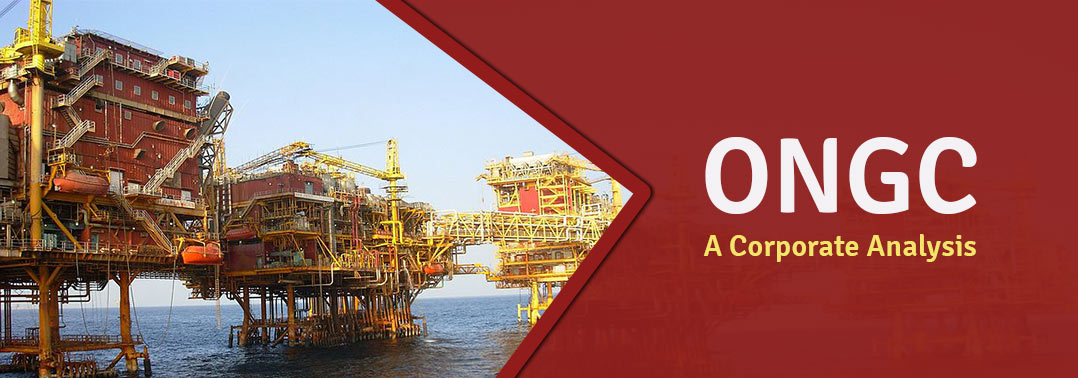Last year, ONGC (Oil and Natural Gas Corporation Ltd) acquired government’s majority stake in Hindustan Petroleum Corporation Ltd (HPCL). The company, with consolidated revenue of INR 3.6 lakh crore and assets of INR 4.6 lakh crore in FY18, seems to have moved away from its original objective of exploration and development of oil resources. Whether the diversification helps it de-risk its business and undertake exploration work more aggressively, or diffuses its attention from the core objective would be interesting to watch out for.
ONGC is a diversified oil sector company, originally formed as an Oil & Gas Exploration and Production (E&P) company. Oil exploration is a challenging and risky business beginning with study of seismic data, which gives an initial idea of presence of oil/gas underground. Actual exploration begins with digging of wells approximately 40-50cm in diameter and at least 2,000m in depth. If no oil/gas is found in the well, the amount spent is accounted as ‘sunk cost’, to be recovered from revenues generated from other operating wells. It is to be noted that exploration business can be carried out only in the area for which license is given by the government, either on nomination basis or through auction.
Other than domestic E&P, it has a foreign subsidiary, ONGC Videsh Ltd (OVL), to participate in oil blocks available in the international market. Since its inception, total investment in OVL is almost INR 1.5 lakh crore, a substantial amount. The company also acquired Gujarat State Petroleum Corporation’s (GSPC) exploration assets in KG basin during FY18 for a consideration of INR 7,700 crore.
Besides the core business, it has substantial exposure to downstream refining & petrochemicals business also. This is managed by its subsidiaries Mangalore Refining & Petrochemicals Ltd (MRPL) acquired in 2003, and Hindustan Petroleum Corporation Ltd (HPCL) — majority stake acquired in FY18. MRPL is expected to be merged with HPCL to create a single refining entity with total capacity of nearly 40 MTPA. With the acquisition of HPCL, contribution of refining business to total revenue has gone up to almost 50% with core E&P business accounting for nearly 30%.
The company also has subsidiaries ONGC Petro additions (OPaL) involving an investment of over INR 30,000 crore and ONGC Mangalore Petrochemicals (OMPL) engaged in petrochemicals business, largely to process by-products produced by the company which is not fetching enough value otherwise. The strategy, or compulsion, of entering into a non-core business is visible in another subsidiary, ONGC Tripura Power Company (OTPC), the power generation JV, which operates a 726 MW gas-based power plant. The plant has been built solely to utilize the gas produced from its fields in North-East, which was, otherwise, getting flared.
ONGC has total 2P (proven and probable) reserves of 800 million tons of oil and 1,000 million tons of gas. Of these, about 40% is owned by OVL. The company produced a total of 35 million tons of oil and 29 billion cubic meters of natural gas during FY18. Share of ONGC Videsh Ltd (OVL) stands at roughly 40% in oil and 20% in gas. The company also receives about 4 MMtoe from its JVs. Despite efforts, the company has not been able to achieve any breakthrough, either domestic or overseas, in enhancing its production. Its efforts are reflected in the fact that total capex stands at almost INR 2 lakh crore over the last five years.
ONGC’s consolidated balance sheet shows total assets of INR 4.6 lakh crore, which is much larger than Indian Oil, the public sector giant engaged in the oil refining segment. Of this, almost INR 2.2 lakh crore has come in the form of equity, implying a comfortable debt-equity ratio. Assets are spread across a number of heads, with oil & gas assets accounting for INR 1.4 lakh crore; and other property, plant & equipment accounting for INR 70,000 crore. Almost INR 40,000 crore is invested in wells under exploration, classified as “intangible assets”. This is the amount at risk, since exploration may not necessarily lead to finding an oil or gas reserve. Investment under development work, the phase after exploration and finding gas, is relatively low, at INR 20,000 crore, possibly a result of relative ease of development in comparison to exploration.
Total income for the company stood at INR 3.6 lakh crore in FY18, nearly a 10% increase over the previous year. However, this includes INR 1.2 lakh crore of purchase of stock-in-trade, largely a pass-through item without much value addition. The major cost item is production, transportation, selling & distribution, clubbed together at INR 1.75 lakh crore. The cost, including change in inventory, has risen from INR 1.2 lakh crore in the previous year. An important item in the expense side is “exploration cost written off” at about INR 7,500 crore. This is the amount spent, but has not yielded any gain to the company. Interest cost is quite low at INR 5,000 crore as a result of limited borrowings. Net profit for the company stood at INR 22,000 crore, a decline of 10% due to higher costs.
ONGC has come a long way from its original mandate, with its core business now accounting for just about 30% of its revenues. While there is nothing seriously wrong with moving up the value chain — most of the world’s mega companies in the field do that — it is important to ensure that the diversification does not diffuse its attention from the core objective. The concern carries more weight since the company has not been able to add much to its oil production over the years. The diversification may help it add to the bottom line and save it from having to answer for not enhancing oil production.
Ashish Agrawal Founder,
India Business Analysis | IIT Roorkee, IIM-C alumnus





















































